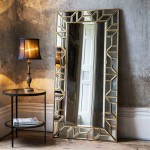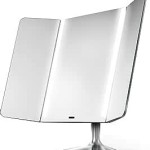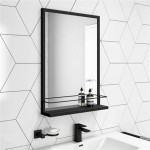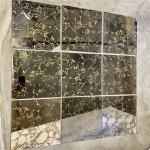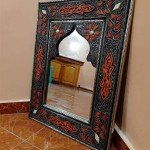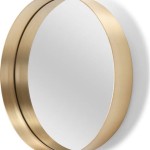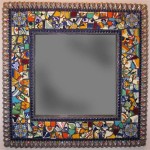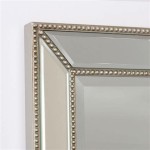Hanging a Large Mirror on Plasterboard: A Comprehensive Guide
Hanging a large mirror on plasterboard walls presents unique challenges due to the material's relatively lightweight and hollow nature. Proper planning and execution are crucial to ensure the mirror is securely mounted and avoids damage to the wall. This guide provides a step-by-step approach to safely and effectively hang large mirrors on plasterboard.
1. Assessing the Wall and Mirror
Before beginning, carefully assess the plasterboard wall's condition. Look for any existing damage, weak spots, or previous repairs. Determine if the wall is a standard plasterboard or a reinforced type, as this will influence the choice of hanging method. Similarly, assess the mirror's weight and dimensions. Heavier and larger mirrors require more robust mounting solutions.
2. Understanding Weight Limitations
Plasterboard has weight limitations, which are crucial to consider, especially with large, heavy mirrors. Exceeding these limits can lead to the mirror pulling away from the wall, causing damage and potential injury. Consulting the plasterboard manufacturer's specifications provides the exact weight limitations for the specific type of wall.
3. Choosing the Right Fixing Method
Several fixing methods are suitable for hanging mirrors on plasterboard, each with its weight capacity and installation process:
- Heavy-Duty Plasterboard Anchors: These specialized anchors are designed to distribute weight over a larger area within the plasterboard, providing a secure hold for heavier mirrors.
- Toggle Bolts: Toggle bolts work by expanding behind the plasterboard, creating a strong grip. They are suitable for medium to heavy mirrors.
- Hollow Wall Anchors: These anchors expand within the wall cavity, creating a secure fixing point. They are suitable for lighter mirrors.
- Stud Fixing: Whenever possible, fixing directly into wall studs offers the most secure mounting solution, especially for heavier mirrors. A stud finder can help locate the studs behind the plasterboard.
4. Locating Wall Studs
Locating and utilizing wall studs provides the strongest possible mounting point. Electronic stud finders can accurately pinpoint stud locations. Alternatively, gently tapping the wall and listening for a solid, less hollow sound can also help identify studs. Marking stud locations ensures precise placement of fixings.
5. Gathering Necessary Tools and Materials
Having the right tools and materials ensures a smooth and efficient installation process. The following items are typically required:
- Measuring tape
- Pencil
- Level
- Drill with appropriate drill bits
- Screwdriver
- Chosen fixings (anchors, toggle bolts, screws)
- Safety glasses
- Mirror mounting hardware (D-rings, wire, etc.)
6. Marking and Preparing the Hanging Points
Accurate marking is essential for ensuring the mirror hangs level and securely. Measure the distance between the mirror's hanging points (D-rings or wire) and transfer these measurements to the wall, ensuring they align with chosen fixing points (either studs or anchor locations). Use a level to confirm the markings are perfectly horizontal.
7. Installing the Chosen Fixings
Carefully install the chosen fixings according to the manufacturer's instructions. For anchors, drill pilot holes of the correct size before inserting the anchors. For toggle bolts, ensure the toggle wings are fully expanded behind the plasterboard. When fixing directly into studs, use screws specifically designed for wood. Ensure all fixings are securely in place.
8. Hanging the Mirror
With the fixings securely installed, carefully lift the mirror and hang it on the chosen fixings. For heavier mirrors, having an assistant can be helpful. Once the mirror is in place, double-check that it is hanging level and securely mounted. Gently tug on the mirror to ensure it is stable.
9. Final Checks and Adjustments
After hanging the mirror, conduct final checks to ensure everything is correct. Use a level to confirm the mirror is still perfectly horizontal. Inspect the fixings to ensure they are not stressed or loose. Make any necessary adjustments to ensure the mirror is securely and aesthetically pleasingly mounted.

Hanging Heavy Mirror On Plaster Walls 6 Steps With Pictures Instructables

How To Hang A Large Or Heavy Mirror

How To Hang A Heavy Mirror On Plasterboard Timber Framed Wall
How To Hang A 100 Pound Mirror On Drywall Quora

How To Hang A Very Heavy Picture Or Mirror The Best

Gripit How To Hang A Mirror Onto Plasterboard Wall

How To Hang A Mirror The Ultimate Step By Diy Guide Aspect Wall Art

Hang A Mirror On Plasterboard Wall Soraya Interiors

How To Hang A 31kg Mirror On Wall With Bunnings Work Community

How To Hang A Very Heavy Picture Or Mirror The Best

